The Design Principle for High Performing Email Campaigns
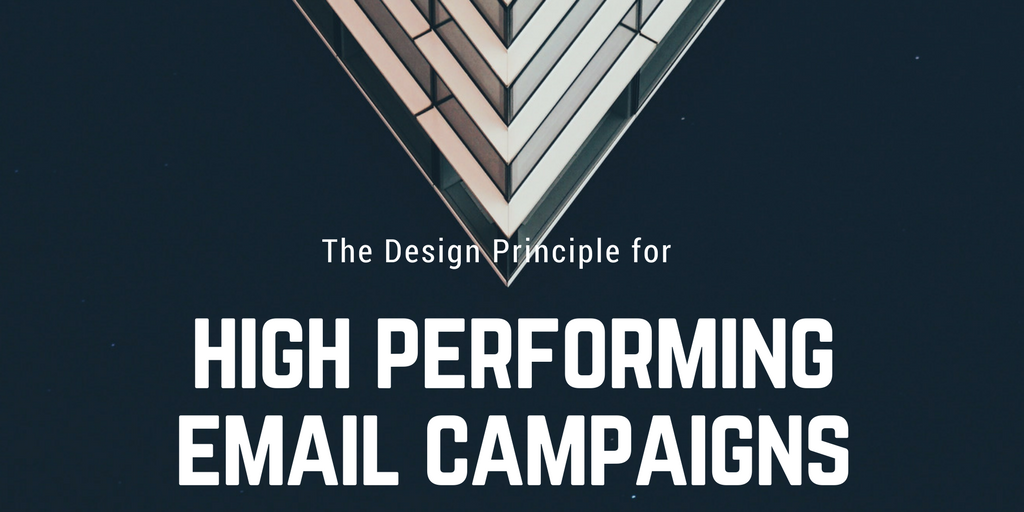
You encounter it every day but may not even be aware of it. It’s the design principle that draws you further into a web page and other digital content like email campaigns—the inverted pyramid principle. Based on the concept that people will look at the most important information on a page first and then skim the balance of the content, the inverted pyramid positions messaging in a way that the reader will quickly get the point of a communication and can decide whether or not to continue reading.
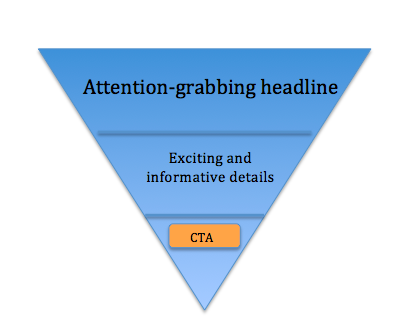
The inverted pyramid principle is not a new concept, in fact, it guided print journalism for years and now, ironically, it is a guidepost for digital communications. Its revival of sorts stems from the lightning fast attention spans of today’s readers which clock in at about eight seconds. And it’s no wonder. We simply don’t have the bandwidth to read everything we encounter in a day. Just in the business side of your life alone, you’ll send or receive an average of 140 emails every day this year. And many of those will be trying to entice you into engaging with a brand to subscribe, like, purchase—you know the drill.
It’s no wonder that savvy marketers have capitalized on design and writing principles that position their email campaigns in the inverted pyramid style. The inverted pyramid lets you craft headers, buttons, imagery, etc. to accommodate today’s speed readers with the intent to easily engage them for a response.
So, let’s dig a little deeper into the elements of email campaigns and put that inverted pyramid to work to generate some revenue.
First things first, define your value proposition.
This is where you have to get really tight with your messaging. Remember, you only have eight seconds to grab a reader’s attention. Here is the meat of what you want them to know; what benefits will they derive from taking advantage of your product or solution. Value propositions must be clear, provide benefits and establish differentiation. There’s a fine line to walk between chest beating about your brand and talking about solving pain points for customers. Always fall on the side of providing benefits information. Always. Even if you have the niftiest new app or UX solution ever devised, always lead with the benefits it will provide potential users. That’s your value proposition.
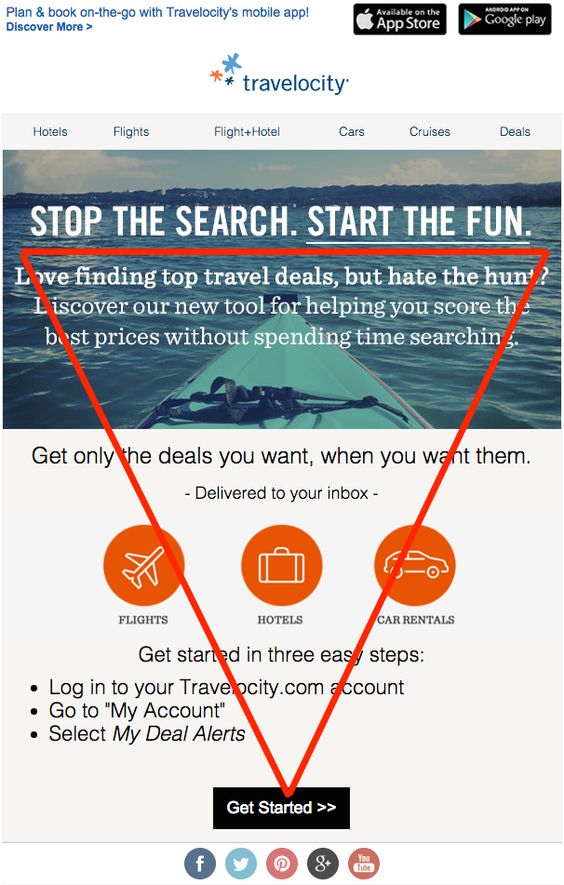
Use killer images.
Human brains process imagery much faster than they do words so utilizing arresting photos and illustrations is a must in a successful email campaign. In the inverted pyramid model, images can work on their own power or be used as a backdrop for the value proposition statement or headline. In the Behavior Tech example, the image of a powerful ocean scene is visually engaging and also supports the end benefit of mindful motivation and decision making. As with copy, images that show benefits or the desired end state are preferable so that the reader can envision himself free of pain points and enjoying the bliss that results from using your product or solution.
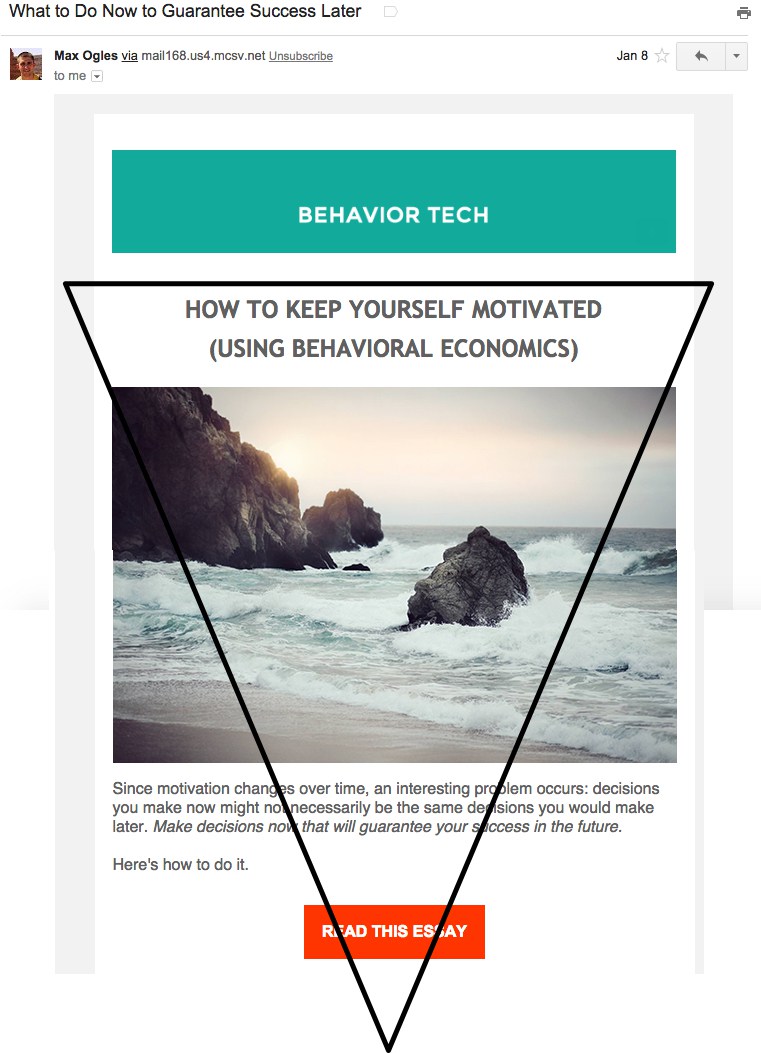
Create tight copy.
As you move down toward the point of the pyramid, your copy should pay off the initial value proposition headline. This is the opportunity to explain more about your offer but don’t think you have to tell everything you know. Just don’t. Keep the copy tight and succinct. Remember that eight second rule about humans preferring to scan and not read. In this PayPal example, the headline is engaging and hints at the benefit while the copy provides a little more detail to make it pay off. Further detail extends further down the pyramid for those who want a little more information and then, ultimately, the call-to-action button brings everything home.
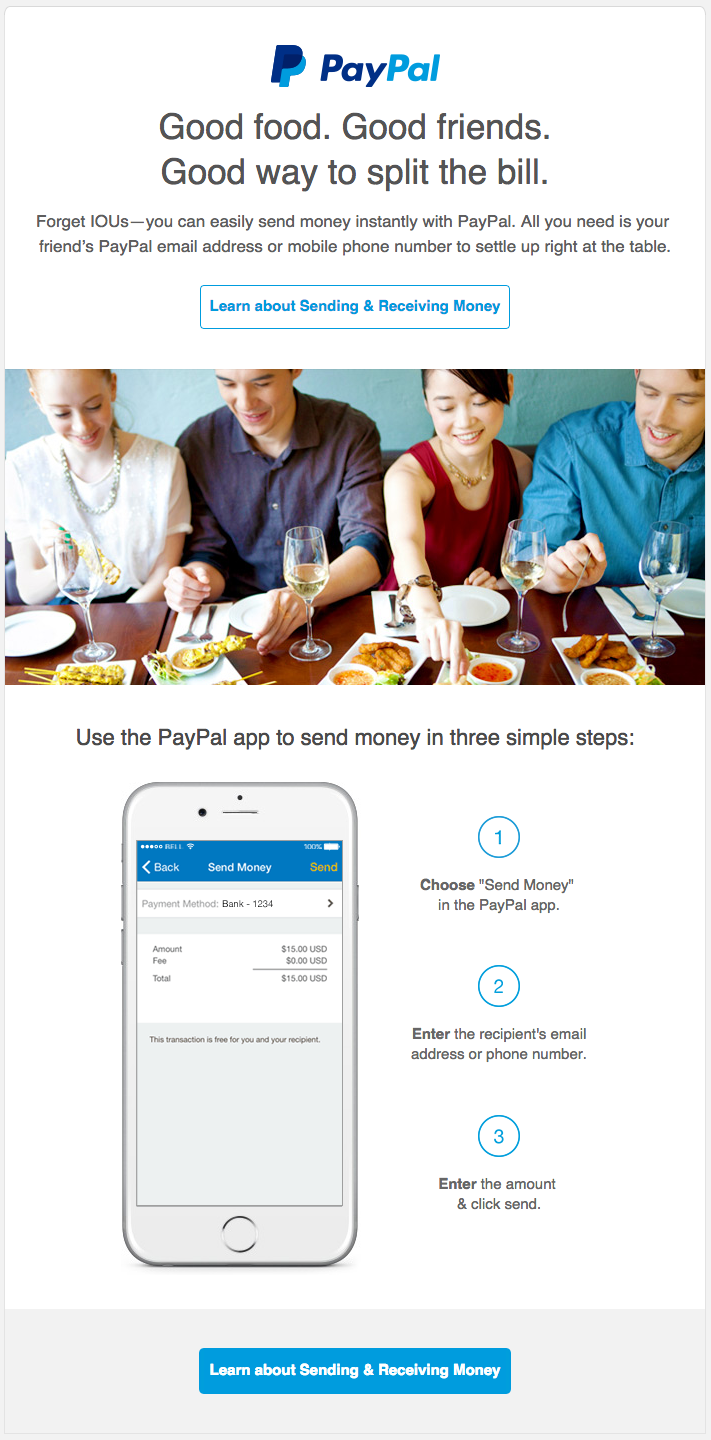
This example from a Litmus email campaign shows how animation can replace static imagery to engage readers and speak to the nature of their product.
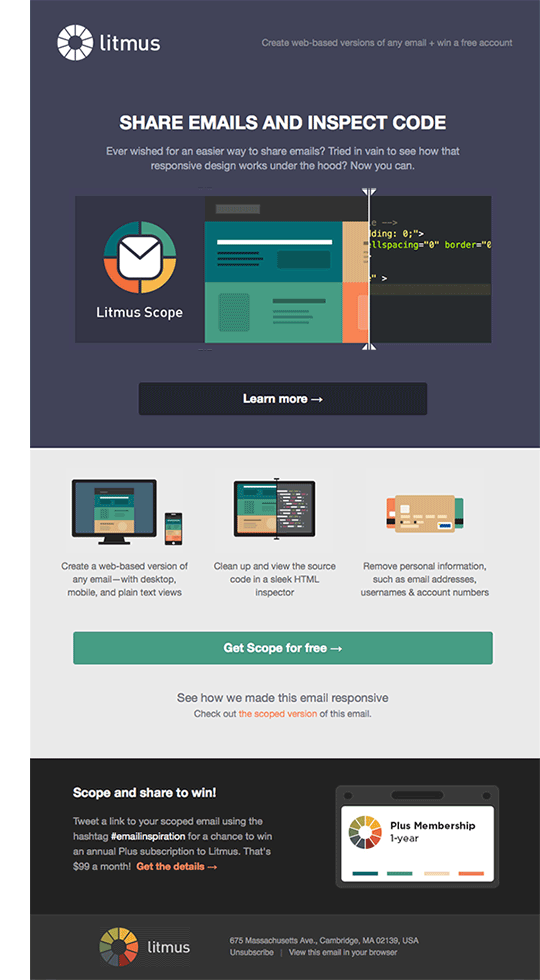
Bring it all home with a great CTA.
At the very tip of the inverted pyramid sits the small, but mighty call-to-action. Typically the most effective element is a button as it delivers more conversions than a type link. Whatever you decide to use as your CTA, just envision where you are at the tip of that inverted pyramid and keep it succinct.
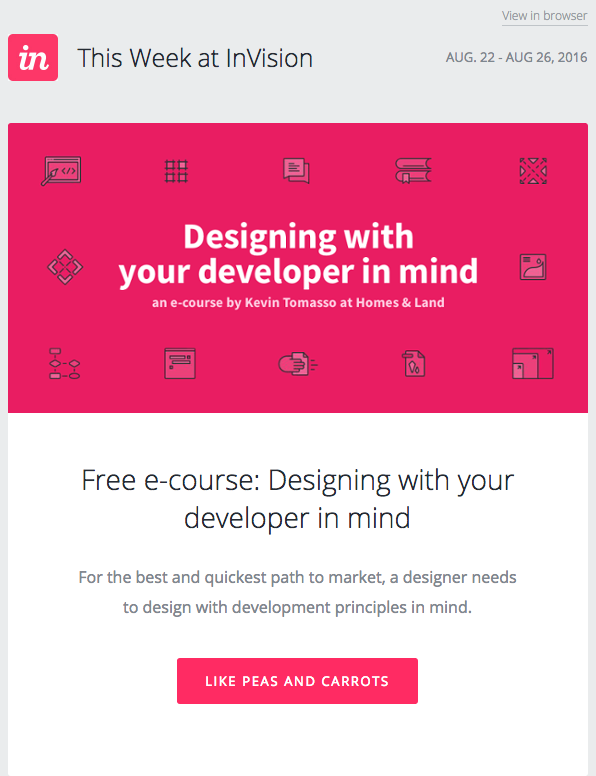
Using the inverted pyramid principle for the design of email campaigns is a simple, yet very effective methodology that brings measurable results. The principle works with emails, newsletters and most other promotions sent digitally and other assets in your content marketing initiative. Using these tactics will benefit you by not guiding your reader quickly to the message and leading them to your call-to-action. They’ll appreciate that you know how to communicate with them and are aware of their time while sharing your information efficiently. Try the inverted pyramid design principle for your next email campaign and see how your responses will dramatically improve.

